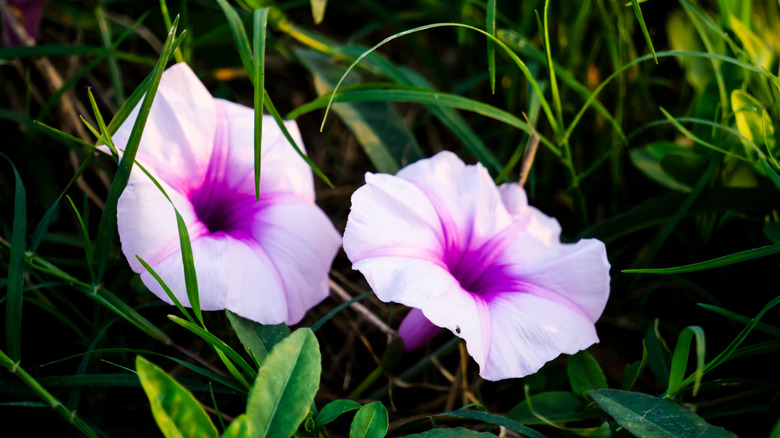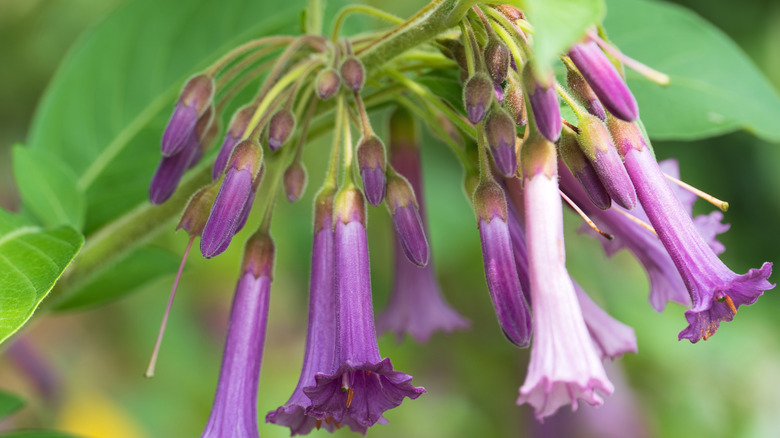Grow These Varieties Of Moonflower For A Colorful Garden
Moonflower is a commonly used name for flowers that tend to bloom in the evening (thus the reference to the moon). While the white moonflower or moonvine (Ipomoea alba) of the morning glory family might be the most readily known, there's also the thornapple (Datura stramonium), too. While many moonflowers are white, they also come in pretty colors, like the purplish pink beach moonflower (Ipomoea violacea) or pinkish angel's trumpet (Datura wrightii). No matter the color, moonflowers all save their prettiest blooms for nighttime. Wondering why moonflowers bloom at night? It's because they're hoping to attract nocturnal pollinators like the hawk moth.
Moonflowers have been a source of fascination for centuries. Rumored to be a key component in certain rituals of ancient Greece and among Native Americans, they're also worn to celebrate Tsukimi, a moon festival in Japan. If you want a colorful nighttime garden, start with the Ipomea family. It's a versatile and tough family of plants, and most will thrive in USDA Plant Hardiness Zones 2 through 12.
The beach moonflower is a purple vining plant that tends to grow near lakes or oceans, such as on beaches in Texas and Florida. Not surprisingly, it prefers sandy soil. Other members of the Ipomoea family also bring a little bit of color, too. The pink moonvine (Ipomoea macrorhiza) is a rarer variety. It has a dollop of pinkish purple at the center of its otherwise white bloom. When it's young, the petals might appear crinkled first before unfurling.
Try these other moonflowers for a nighttime pop of color
For other colorful flowers that bloom at midnight, try angel's trumpet. This Datura plant grows white, purple, or lavender blooms. It prefers warmer climates, and thrives in zones 8 through 12. Angel's trumpet is a drought-tolerant plant that's a popular choice for xeriscapes. It grows between 2 and 5 feet high and tends to sprawl. Know that it can get weedy in the dry, arid soils of the western United States..
You can also try its cousin, thornapple, as well. Also known as jimsonweed, its tubular flowers also bloom in shades of lavender or white. Thornapple is sensitive to frost, but it definitely doesn't mind the heat. Thornapple thrives in zones 8 to 12 as well. This herbaceous perennial likes full sun, so that means at least six hours of light a day. Before you plant, though, keep in mind it's also known for its less-than-pleasing smell. While moths may love its fragrance, people might not. Some people even call it a stinkweed.
Keep in mind that Datura cultivars are in the nightshade family (Solanaceae), so it's poisonous and shouldn't be eaten by either people or pets. Most Datura plants are considered relatively low-risk, however, as a person or pet would need to consume a lot of the seeds or parts of the plant to actually get sick. Many moonflowers are poisonous in general, including those in the Ipomoea family. If consumed, some moonflower effects can include hallucinations, seizures, or even a coma.

